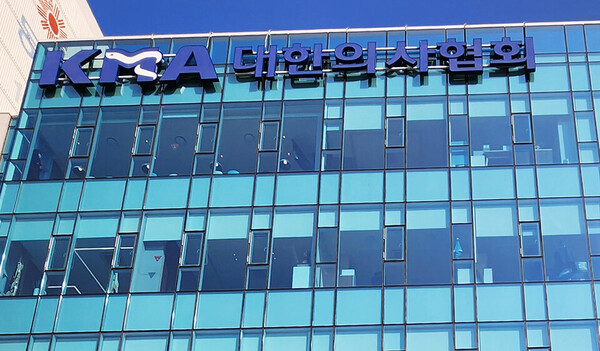The Korean Medical Association (KMA) has tentatively decided to discuss the medical school enrollment quota at the Medical Workforce Supply and Demand Estimation Committee.
The largest doctors’ group is also expected to begin selecting expert members to recommend to the panel.

The Korean Medical Association has tentatively decided to participate in the medical workforce supply and demand estimation committee. (KBR photo)
According to medical circles, the KMA decided to move toward participating in the committee after discussing the matter at its standing board meeting held after the National Assembly passed an amendment to the Basic Healthcare Act on Wednesday.
Twenty-eight of 30 board members were reportedly in favor of the proposal. The KMA had been negative about the amendment, saying that it is difficult to ensure the committee's independence and expertise and that the medical community's needs have not been properly reflected.
“It hasn't been voted on yet, but almost all standing board members expressed that they should participate in the committee. One can assume that the KMA will also participate (in the supply and demand estimation committee),” a medical community source who requested anonymity told Korea Biomedical Review over the phone shortly after the board meeting. “I think KMA will announce a detailed follow-up position on Thursday.”
KMA President Kim Taek-woo was not present at the meeting but is reportedly not opposed to participation.
“Kim has always viewed the formation of the manpower estimation committee as important,” said another medical official who wanted to remain anonymous. “The fact that the KMA’s executive branch cited the legislation of the committee as its major achievement in last Friday’s briefing is proof of this.”
If the KMA joins the committee, it will begin deliberations on the medical school enrollment quota for the class of 2027. Of the 15 committee members, including one chairman, seven are from provider organizations, including the KMA. Patients and other consumer organizations will nominate four, and academia will nominate the remaining three.
The key will be the selection of expert members. The members must be experts majoring in related fields, including economics, health, statistics, and demography; those who have expertise in labor policy or labor supply and demand estimation; people with strong research track records; and be at least assistant professors or research fellows at research institutes.
Some medical community members believe selecting members meeting all three requirements will require considerable investment.
“In the medical community, the pool of qualified candidates is narrow, with no more than 20 members,” the medical community source said. “If the requirement to nominate members is strictly applied only to provider organizations, equity, fairness, and professionalism will be compromised.”